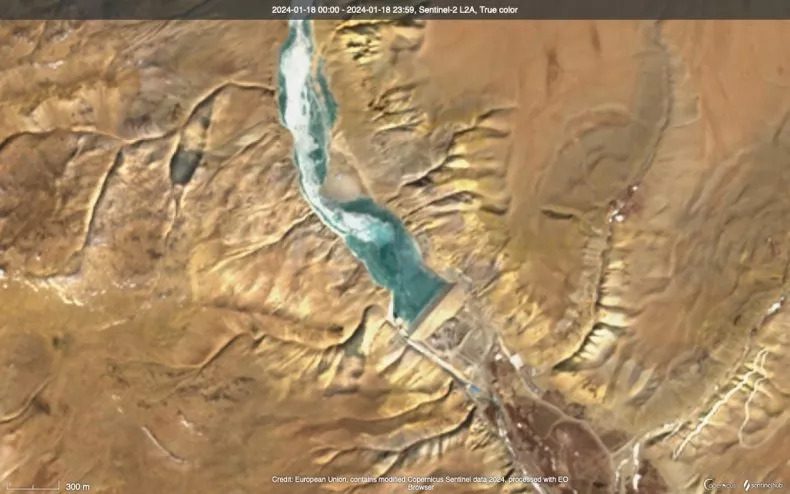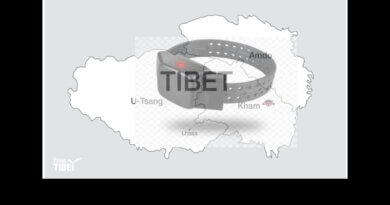China’s Continuous Dam Project in Tibet: Threat to Neighbors and Environment
By Tsering Choephel

DHARAMSALA 25 Jan: China’s construction of a new dam in Tibet’s Purang region in Ngari has reportedly been completed, indicating significant strategic implications for neighbouring countries such as India and Nepal, according to a Newsweek.com report on January 22.
The observation is made from satellite imagery from Sinergise’s Sentinel Hub website, which renders photographs captured by the Sentinel-2 satellite of the European Union’s Copernicus earth observation program. The report notes that the dam’s construction began in July 2021.
The dam is built on Mapcha Tsangpo (Peacock River), originating near Mount Kailash, a sacred site for devotees of Bon, Buddhists and Hindus. This perennial river, known as Ghaghara in India and the Karnali in Nepal, serves as a significant freshwater source for millions in western Nepal and the Northern plains of India.
Built north of Purang in Tibet’s Ngari prefecture, the dam is approximately 18 miles north of Nepal’s border town of Hilsa and roughly 37 miles east of the Indian border.
China’s extensive development of mega-dam projects on Tibet’s rivers has raised concerns among downstream riparian countries, affecting ecology, livelihoods, and triggering concerns of what experts called “hydro-hegemony.”
In addition to the dam, China has constructed a new Ali Pulan Airport in the region. This dual-use facility, designed for both civilian and military purposes in border areas, officially became operational late last month, according to the report.
Sana Hashmi, a postdoctoral fellow at the Taiwan-Asia Exchange Foundation think tank in Taipei, emphasised India’s natural concern about the potential long-term repercussions of Chinese activities saying “Understanding China’s hydro-behaviour with other neighbours is crucial in deciphering its hegemonic approach that has gone unchecked as of now”.
Reportedly, Beijing halted sharing hydrological information with New Delhi in 2017, and the renewed data-sharing contract came at a cost of over $19 million for information from three hydrological stations, according to a 2022 investigation by The Quint news.
China’s damming project at Tibet’s Yarlung Tsangpo is also a significant point of friction in India-China relations due to its strategic potential to control freshwater access to the downstream Brahmaputra. The Yarlung Tsangpo, in the east of their long and disputed border, is a critical source of fresh water for India’s northeastern regions and Bangladesh, as per the report.
Mark Giordano and Anya Wahal, experts at Georgetown University’s Walsh School of Foreign Service argued that “The Brahmaputra would appear to be at the top of the list of conflict hotspots. The river is shared between four states, including the world’s two most populous, China and India. Both have rapidly growing economies, and both are already among the most water-stressed in the world.”
In recent years, India has protested China’s construction of hydropower projects by refusing to purchase electricity from sites with Chinese investment, such as the Chameliya hydropower station in Nepal, built with Beijing’s financial aid.
China is currently constructing another dam in the Purang region. According to the report, construction began in December 2022, as reported by China’s state-run media Xinhua. This project could extend China’s control over the Tibet river system upstream from the Mapcha Tsangpo, potentially leading to severe consequences downstream.
Amidst these developments lies the fragile ecosystem of Tibet’s plateau, considered critically and globally significant in the context of accelerating climate change.
Tibetans in exile, represented by the Central Tibetan Administration (CTA), environmental organizations, and others, have intensified and expanded Tibet’s environmental campaigns internationally. They align these efforts with the global climate change movement under the theme of ‘Tibet – the Third Pole’.






